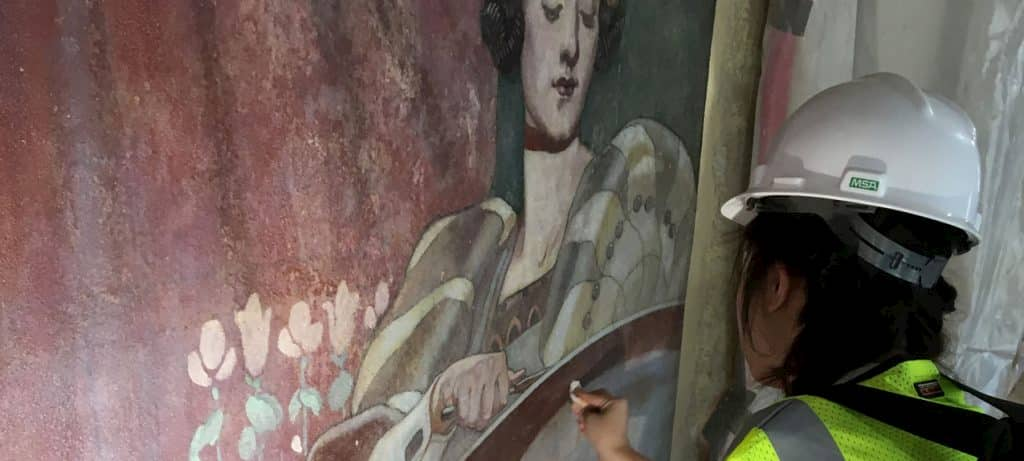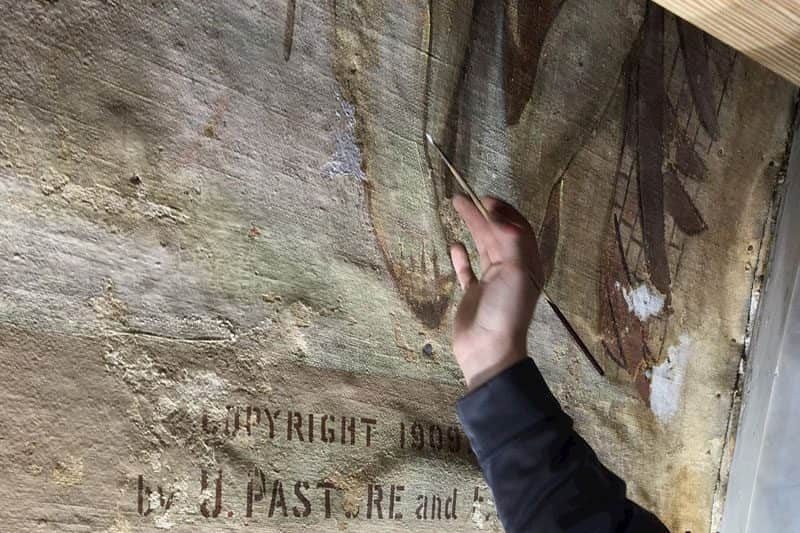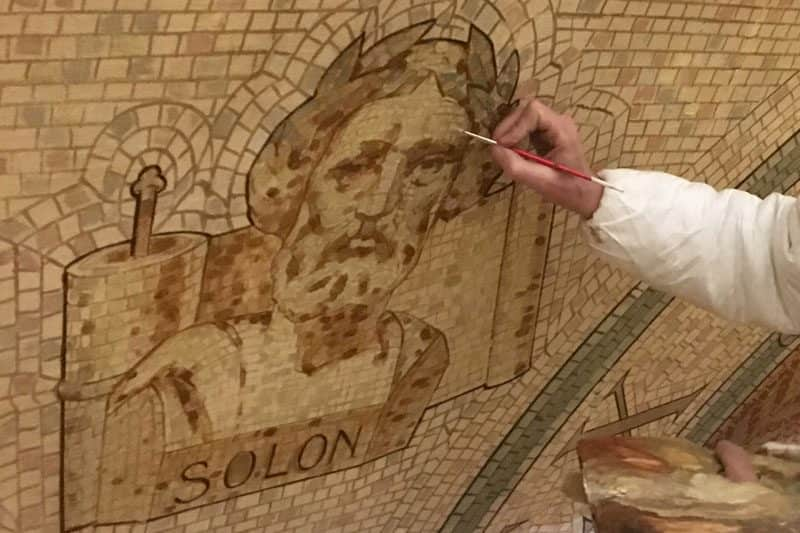Paint Restoration: Process & Techniques


In preservation, the processes and techniques used to conserve and restore historic decoration, murals, or artwork are established by a multitude of factors. However, two key factors will help identify what specific conservation process will be utilized: the type of paint and the type, or cause, of failure.
In general, there are two types of paint: oil-based and waterborne paints. Knowing the type of historic paint used can also help identify the type and/or cause of failure.
FREE RESOURCE:
Identifying Historic Paint: A Guide to the Significance of Paint in Historic Structures
The Process
Paint restoration and conservation begins with a conditions assessment. A conditions assessment examines the existing conditions of the decoration or artwork being conserved or restored and documents as much of the original as possible.
This could include mappings of the artwork identifying areas of failure such as flaking paint, craquelure, canvas tears or delamination, staining, efflorescence or water damage. For decorative painting, this could include tracing of the historic stenciling or custom color matching the historic paint.
During a conditions assessment, the conservator will also complete solvent tests that will determine the appropriate cleaning or removal methodology in to determine if any incompatible finishes exist, such as a yellowing varnish, and if and how it can properly be removed. Ultraviolet light may also be incorporated as different materials and coatings react differently to the lighting.
The conservator is able to gleam additional information regarding the artwork, such as locations of previous interventions, overpaint, and inpainting, previous repairs and, in some cases, determine the approximate date of the application of a varnish layer. This will help determine what techniques and materials to employ during conservation.
A conditions assessment is an essential part of the restoration, or conservation, process. In addition to providing thorough documentation of the historic artwork or decoration, it is the first step in providing a treatment proposal. Using the findings from the conditions assessment, a treatment proposal provides the client and owner with the recommended techniques and materials to be utilized for conservation. All materials considered must be compatible with the original artwork and also reversible and adhere to the AIC Code of Ethics.
1. Varnish Removal
Many paintings and murals have, at some point, been varnished with incompatible varnishes. This may have been applied for maintenance or protection, but most are unaware of the importance of using a reversible conservation varnishes. Over time, varnishes may yellow and darken altering the visual impact of the artwork. An essential step in conservation is to remove the yellowed and darkened varnish in order to reveal the historic layer of paint and allow the artwork to be viewed as it was originally intended. The solvent testing performed during the conditions assessment will identify what solvents and materials to use to remove the yellowed or darkened varnish without harming the original paint layer.


2. Paint Stabilization, or Consolidation
Flaking and delaminating paint is a condition many are familiar with. You have likely seen this failure at varying degrees, and in some cases, rather than remove the loose paint it is possible to stabilize and preserve the historic paint layer. While this is a challenge due to the friability of the paint, readhering the paint film to the substrate can be done by injecting adhesives and applying heat to soften the paint and re-adhere it back to the canvas or plaster.


3. Infilling
Where areas of paint are lost, craters or divots are created that must be infilled back to a level plane. In some cases, these divots could be millimeters and in others they could be as large as an inch. Losses are infilled with a type of putty or composite material that will create an even cohesive surface for inpainting.


4. Inpainting
When inpainting, the conservator takes special care to limit the areas of paint only to the areas of paint loss, never overpainting the historic paint layer. There are several types of inpainting techniques that may be employed, pointillism, trateggio, rigattino, and deceptive techniques that perfectly match the original work. The conservator uses a pointillism technique, color matching to the specific area.


Knowledge & Detail
A fine arts conservator, or architectural materials conservator, is trained in the chemical components of materials and solvents. They understand the constituents of paint and the traditional methods employed to implement them. With this knowledge, and knowledge of art history and architectural periods, conservators are problem solvers committed to preserving historic artwork and decoration for generations to come.
